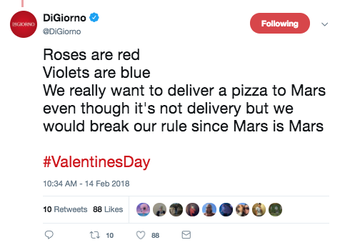 By Brianna Valleskey There’s sizeable obsession around the idea of making a brand seem more human right now. A quick Google search yields at least 10 pages (yes, TEN. I stopped looking after that) articles touting tips and tricks to make your brand sound/look/feel/act more human. It makes sense. People buy from people (and brands) they know and trust. Even in the realm of business, Maya Angelou’s famously poetic quote about relationships rings true: “People will forget what you said. People will forget what you did. But people will never forget how you made them feel.” Purchasing decisions, like most decisions, are made based on emotion. So, if you can create at association between your brand and positive feelings (beauty, strength, safety, warmth, excitement, sexiness, etc.) in the minds of consumers, you’ve struck gold. And the quickest way to do that by talking to them directly through social media. But I think what we need to remember is that a business is not a human - it’s a tribe of humans all working toward the same goal. And that’s the image that should be reflected in your brand messaging. The issue arises when brands become fixated with the idea of appearing human. In their attempt to appear more authentic, they come off as less genuine. I’ve seen some instances so cringe-worthy that it was like watching your Baby Boomer father try to be cool by saying something is “on fleek.” For what it’s worth: I give the businesses that are trying to be human more credit than the ones who use social media as another channel for self-promotion or simply a glorified RSS feed for their blog. I think what we need to remember is that a business is not a human—it’s a tribe of humans all working toward the same goal. And that’s the image that should be reflected in your brand messaging. The big problem with making brands more human is that, in doing so, many companies make them LESS human. But it doesn't have to be that way. As helpful as high-level strategic advice can be, I also want to provide some practical examples of what I mean. Here are some companies doing it well across a few different industries (for the purposes of this article, we’ll mostly focus on their Twitter presence): Slack (@SlackHQ): B2B Tech Slack knows that a brand is the sum of all the interactions people have with your company. That’s why the organization responds to almost every single tweet directed at their Twitter account (in the early days, especially, thousands of those replies came from Slack’s own CEO, Stewart Butterfield). The company is also super transparent and proactive about updating customers on support issues. Six million people use their platform every day, and they keep everyone up-to-date via both their Twitter account and Slack System Status page. The best part? They always sound super approachable and down to earth when communicating to their users. Also, have you heard of #beeftweets? It’s an internal Slack channel the company uses to draw attention to customer complaints on Twitter related to product issues, feedback, feature requests, potential improvements, etc. The Slack team discusses how to address the issue. If a fix is in order, it’s launched within a couple of days (as the complaints are typically minor). Then Slack tried to respond to the original complaint on Twitter to let the user know that they made the fix. I can’t think of a better way to make your customers feel heard, understood and appreciated. Grammarly (@Grammarly): B2C Tech Grammarly really, really understands their audience: millennial (or at least tech-savvy) people who want to write well. They use their Twitter profile to inspiring #MondayMotivation quotes or funny #FridayFeeling memes, but also to share helpful spelling, grammar and punctuation tips and tricks. Another wonderful trait about Grammarly is that the company immediately responds to people who tweet at them. I’ve posted a few times about the weekly writing stats they email out, and they always respond with a fun, encouraging message that legit makes me want to be friends with them. Seriously, does it get any better than a meme from “The Office”? I think not. Sephora (@Sephora): Retail Sephora acts like your bright, sassy, funny and fun BFF on social media. (That branding is consistent across all of their platforms, as well. The login portal of their website says, “Hi, Beautiful.”) The company uses tons of emojis and their own branded hashtags (#SephoraSkincare), in addition to posting content that’s super relatable to their audience. This is the kind of stuff that makes your customers think, “Yeah, that company really gets me.” Also, instead of merely pushing their products, Sephora provide helpful beauty tips and tricks. They also polls to let their customers chime and celebrate holidays that aren’t specifically related to what the company does. Celebrating is just human nature. DiGiorno (@DiGiorno): Food & Beverage I want to meet the person who runs the official DiGiorno Twitter account and shake their hand. It’s seriously so funny. And not just once-in-while-while-gem-of-a-tweet kind of funny; I’m talking consistently, habitually hilarious. I’d also like to note that the vast majority of the content coming from their Twitter account is simply comical content. The rarely publish adds. Seriously! I counted the company’s 50 most recent tweets and only three of them were ads. That’s only 6 percent of the social media posts on their account! My hypothesis is that it’s a strong sense of self-awareness that their ad message is already pretty well known (it’s not delivery, etc.), and the company has found that it’s a better use of their time to simply build brand affinity. Brave, DiGiorno. Your strategy is brilliant. A lot of marketers talk about branding as this abstract, philosophical concept. But I think it’s much simpler than that: consider the people you want to connect with: What do they care about? Where and how do they consume information? How do they communicate? What groups do they want to be a part of. As Chris Brogan says, “Business is about belonging.” So make your brand simply a tribe of people that your customers (current and potential) would want to be associated with, and they’ll naturally gravitate toward you. And yes, I realize that as a female writer working in tech who f*cking loves pizza, these are all brands I personally love. But there are plenty other examples out there that I’m sure I’ve missed. Do you have any favorites? Let me know in the comments below!
2 Comments
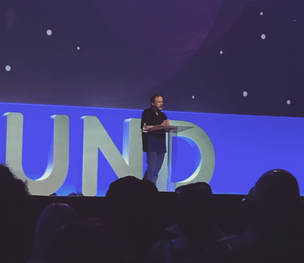
By: Brianna Valleskey
How do we develop more creativity in our organizations? Most people think of creativity fairly narrowly and only in terms of art or science, but Ed Catmull believes otherwise. “Creativity is the process by which we solve problems,” said the president of Pixar Animation Studios, “whether that’s through a story, marketing or a relationships between partners and customers.” Ed is a 20-year veteran of Pixar, as well as the author of “Creativity, Inc.” His ideas challenge conventional wisdom about the creative process, and he was kind enough to share some important creativity hacks during his INBOUND session last week. I thought they were more than worthy of a dedicated blog post. Ed Catmull’s Advice for Empowering Creative Thinking Increasing creativity means removing roadblocks. People often ask how someone can be more creative. Ed said that a better question is, “What management, cultural and other roadblocks are getting in front of being creative?" By the time Disney purchased Pixar in 2006, it hadn’t produced a major box office hit since “The Lion King” more than a decade earlier. The studio suffered from a lack of introspection, Ed explained. Different organizational groups (marketing, finance, technical, filmmakers, etc.) within the company had different values ― as they should ― but the values of the production team prevailed. While production, itself, was optimized, that structure forced much of the creative strategies to fail. That forced alignment around the values of the production teams acted as a roadblock for the studio’s creativity. To help solve this problem, the studio leadership (including Ed, Steve Jobs and John Lassiter) created a “story trust” (more on that below) for the Disney team to help prioritize creative values and reinvigorate the team’s process. A few years after that, Disney finally produced its next box office smash, “Tangled.” Ego is a creativity blocker. Another secret to increasing organizational creativity is to remove ego from the process. The idea for Disney’s story trust came from Pixar’s own “brain trust,” a group that comes together after the first screening of a new film. They trust operates on a few very specific principles: It’s peer to peer. Filmmaker to filmmaker. The purpose is to remove management and hierarchy from the room so that the director can make decisions; not Ed or (Pixar Chief Creative Officer) John Lasseter. The filmmakers are expected to give and listen to honest notes. Removing perceived oversight allows directors to actually hear what people have to say. Another principle of the brain trust is to carefully observe the filmmaker dynamics: Does everyone contribute? Does somebody dominate? Are they trying to help each other? Is someone afraid to speak? Of course, the brain trust doesn’t function perfectly. But when it does, Ed said, magic happens. “And by magic, I mean that you feel ego leave the room,” he said. “All the attention is on the problem.” This is important. Removing ego allows ideas come and go without people becoming attached to them, thus enabling the creative process to flow. New ideas are fragile. Treat them as such. Ed claims that all Pixar movies suck at first. “I don’t mean that because we’re being modest or self-effacing. I mean that in the sense that they suck,” he said with a chuckle. The first version of “Up,” for example, involved a castle floating in the sky. A king lived there with his two sons, and the people in the castle were at war with the people on the ground. The sons didn’t like each other very much. They somehow go overboard and end up on the ground (in enemy territory), and then come across a large bird. According to Ed, this version sucked. The only thing that came from it was the bird and the word “up.” The second version had a 20-minute intro. Carl floats away in the house with a boy scout. They land on a lost Russian dirigible that’s painted underneath to look like clowns. That version didn’t work, either. The fourth version brought back the large bird and introduced the films main antagonist, Charles Muntz. The main plot driver, however, was that the bird’s eggs gave everlasting life to anyone who ate them (which is what Muntz was after). The film still wasn’t working. They lost the eggs, whittled down the 20-minute prologue to four and a half minutes of pure gold and produced one of the most-beloved animated movies of all time. (Admit it: That intro made you tear up.) “This path [of that film] was wildly unpredictable,” Ed said. “New ideas are often fragile and off track. We had to protect that crew while they working on something that wasn’t good, trusting that their motivations were going after the right thing.” Don’t be afraid of the wilderness. Ed Catmull probably knew Steve Jobs better than almost anybody else. After he left Apple, Steve purchased the computer graphics division of Lucasfilm (where Ed worked) in 1986 and renamed it “Pixar.” He was also running NeXT computer at the time. Ed watched Steve experience countless failures during this time, but he also watched him learn an incredible amount. Steve’s empathy changed dramatically over that time, Ed said, enabling him to become the person who returned to Apple and made it great. “This was a lot like the hero’s journey,” Ed said, “where the hero is cast out of the kingdom, wanders in the wilderness, learns and lot and then returns to make the kingdom a better place.” The hero’s journey refers a classical story arc, and some of our favorite tales follow this template: Star Wars, Harry Potter, The Hobbit, The Wizard of Oz and even The Princess Bride. Ed’s point here is to not be afraid to go into the wilderness (or wander or get lost or attempt something that seems impossible), as it almost always ends up being a period of immense growth. Believe that what you’re doing makes a difference. Ed’s final piece of advice for fostering more creativity in our organizations was simple: put purpose behind everything you do. “If you believe, as I do, that your actions make a difference, this means you can modify your reality. You can change the future,” He said, adding that he hoped everyone in the audience would do so. From all of this, I think we can definitively say that enabling creativity is critical to the future success of any company. I challenge all business leaders to let creativity run wild within their organizations ― to infinity and beyond. P.S. Ed started his session by saying that Pixar does not make movies for children. The studio makes movies that are intended for adults (but still accessible to everyone). People forget that children live in an adult world, he said, and they’re built for figuring things out. They want to figure things out, and that process of figuring things out is also creative. I found this incredibly clever. See below for a few books that specifically tackle the topic of creativity.  By: Brianna Valleskey How does one even begin to describe Michelle Obama? Lawyer. Activist. Feminist champion. Wellness crusader. Mother. Education advocate. Role model. Beacon of grace. Oh! And, of course, the former First Lady of the United States. HubSpot’s INBOUND had its biggest day ever when the conference hosted Michelle as a keynote speaker this morning. Thousands of attendees woke up before the crack of dawn to get through stadium-level metal detectors at the conference center, secure an actual seat in the main stage auditorium and wait for hours just to hear the former First Lady speak. Ms. Michelle Robinson Obama did not disappoint. In addition to sharing feelings on being in the spotlight and transitioning out of the White House, Michelle opened up about what it means to know yourself and be truly authentic. Her ideas were deeply moving (like people-crying-the-audience moving). I couldn’t not write about it. So here’s some motivation from the icon, herself, on living a life that’s genuine to you. How to Be Authentic (Courtesy of Michelle Obama) Do not let your voice be silenced. Michelle’s currently writing a book. As she’s been collecting stories of her life for the book, she realized that a narrative starting to emerge: believing in your authentic self. “Who I am, I was that way at three [years old]. I was a loud mouth. I was confident in myself,” she said. “If I was successful, it’s because of that. I was always Michelle Robinson Obama." Michelle never tried to be anybody else. But not everybody is tapped into their authentic selves like that. Some of us have been taught that our opinions are less valuable. Women, especially, who have sat in a classroom, in a boardroom or around a conference table can relate to this. Women have been socialized to sit there and be quiet, she said. They think 12 times before opening their mouths. There’s so much that goes on that shushes women in the world, but it often happens in subtle ways. “We can look at ever sector and every industry and find ourselves quietly letting our voices become invisible,” she said. “We can’t afford to just sit by.” The key to not letting your voice be silenced is to love yourself. If you don’t like who you are, it’s easy to let people walk all over you. Michelle urged people to not only love themselves, but ask what it is about them that makes their opinion less valuable. Challenge the status quo. Understand your innate self-worth. Do not live without empathy; without compassion. Like every political figure, Michelle and her family have undergone loads of criticism. You can get past it by distinguishing between productive criticism and pure craziness (the latter of which is usually pretty easy to identify). But fame is a monster. Michelle explained that when you’re famous, people feel like they have the right to walk right up to you on the street and say anything they’d like. It doesn’t bother her as much as it likely bothers her kids. “When you’re a grownup, what other people say about you doesn’t matter. You know who you are,” she said. “But when you’re young, and you don’t know who you are yet, it becomes difficult.” Somewhere around 20-30 times a day, one of her children has to engage with a stranger who comes up, asks for a photo, shares an unwarranted opinion, etc. Michelle tries to be a model of grace for his kids. They see her reaction to all the fame as guidance. “I think my kids are resilient enough to be empathetic to people, but it does take practice,” she said. “We all have to be a little empathic in this world. We have to exercise patience.” Her advice: Take a moment to know yourself. Know your truth. Don’t let what other people say define you. Responding in anger might feel good in the moment, but it’s always better to handle people with kindness. Do let your work speak for itself. Michelle did not want to be a First Lady of slogans or symbolic gestures. It was important for her to enter the White House with a strategy and a set of initiatives that were part of that strategy. Even though every news story about her during that first year in office focused mainly on what was wearing, she didn’t feel the need to prove herself. She knew that her work would speak for itself; that people would come to know who she was through it. “If you’re doing good work, and it’s having a good impact on people, all that other stuff will work itself out,” Michelle said. And it did. Her initiatives changed our country’s dialogue around health. They moved the ball on nutrition and exercise, as well as created more conversations to enlighten people about what they’re putting in their bodies. But doing great work is about more than a legacy. It’s about how you treat the people around you (especially, those who work for you). Michelle loves managing people. Throughout her career, she has always treated her teams like family. That means asking how they’re doing, asking about their families and generally caring about their lives. “You can’t get a job done with people and not recognize their humanity,” Michelle said. Her philosophy of being a good manager is one of empathy, compassion and patience. Leaders shouldn’t lose sight of the fact that they’re working with actual humans. Do absolutely anything. What did Michelle say that she learned in the White House? That she can really do anything. “As a woman, as a minority, as someone who is tall, as someone who is different ― we are put down with messages in our heads of what we’re capable of doing,” she said. She joked about how people would ask her how she learned to be the First Lady, as if she didn’t have an entire life before getting to the White House. Each blow, each negative comment she had experienced long before then had made her the strong woman she was by the time 2008 rolled around. She was ready for the challenge of being the First Lady. “Life teaches you grace. It gives you that ability, when you encounter obstacles,” she said. “Don’t be afraid of failure. Don’t be afraid of obstacles. Those things make you stronger; make you better.” It’s hard to not believe those words when coming from a powerful, incredible woman like Michelle. I can’t wait to read her book. Also, her favorite song off of the Lemonade album is “Love Draught.” YAS QUEEN.  By: Brianna Valleskey Marketing is much older than we think. Some people argue that the discipline emerged after the standardization of quality products halfway through the 20th century forced companies to find other ways to distinguish themselves from competitors (see: brand management). Others note that market research was first identified as a business activity in the early 1900s. A few even assert that marketing has been around since Gutenberg’s moveable type enabled the earliest print advertisements. These claims, however, depend highly on one’s definition of marketing. The American Marketing Association describes it as “the activity, set of institutions, and processes for creating, communicating, delivering, and exchanging offerings that have value for customers, clients, partners, and society at large.” Quite a mouthful. Investopedia provides a more clean-cut explanation, where marketing is “everything a company does to acquire customers and maintain a relationship with them.” But my favorite comes from researchers and textbook authors Philip Kotler and Gary Armstrong: “Marketing is the social process by which individuals and organizations obtain what they need and want through creating and exchanging value with others." In this sense, marketing began millions of years ago. Hundreds of millions. With plants. The Ancient Origins of Marketing As Hope Jahren explains in her book “Lab Girl,” the primary purpose of sex on planet earth exists is to mix the genes of two separate beings and produce a new individual with a gene code identical to neither parent. “Within this new mix of genes are unprecedented possibilities, old weaknesses eliminated, and new weaknesses that might even turn out to be strengths. This is the mechanism by which the wheels of evolution turn,” Jahren writes (poetically, I might add, which is a difficult feat in the realm of science writing). She goes on to describe that sex requires touch, where the living tissues of two separate individuals must come into contact and then attach. This is a problem for plants. Since they cannot move, many plants can (and still do) scatter their pollen on the wind in hopes that any amount will land on a female flower -- an incredibly inefficient process. So nature came up with a solution about 135 million years ago, biologist Dave Goulson describes in his book, “A Sting in the Tale: My Adventures with Bumblebees.” “Pollen is very nutritious. Some winged insects now began to feed upon it and before long some became specialists in eating pollen. Flying from plant to plant in search of their food, these insects accidentally carried pollen grains upon their bodies, trapped amongst hairs or in the joints between their segments. When the occasional pollen grain fell off the insect on to the female parts of a flower, that flower was pollinated, and so insects became the first pollinators, sex facilitators, for plants,” Goulson writes. “A mutualistic relationship had begun which was to change the appearance of the earth. Although much of the pollen was consumed by the insects, this was still a vast improvement for the plants compared to scattering their pollen to the wind.” A mutualistic relationship? That sounds like individuals and groups obtaining what they need and want through creating and exchanging value with others. Evolution & Adaptation Goulson offers even more: “Insects had to seek out the unimpressive brown or green flowers amongst the surrounding foliage. It was now to the advantage of plants to advertise the location of their flowers, so that they could be more quickly found and to attract insects away from their competitors. So began the longest marketing campaign in history, with the early water lilies and magnolias the first plants to evolve petals, conspicuously white against the forests of green.” Plants began marketing themselves millions of years before our first ancestors walked the planet. Our verdant, immobile fellow beings were the earth’s first marketers! It’s no wonder that studies show interacting with nature can increase creativity. And I’m sure there’s much more we could learn from nature. So the next time you need a little creative inspiration, talk a walk through a nearby park or conservatory. The fresh air, quick exercise and presence of the world’s most experienced marketers will surely spark something inside your mind. I also highly recommend you check out this excerpt of Goulson’s book that was published in Scientific American a few years back. Save the bees. |
AuthorFearless Thoughts are my insights on marketing, entrepreneurship, startups, business growth, creativity and whatever else comes to mind on any given day. Writing is how I make sense of the world. Archives
March 2022
Categories
All
|
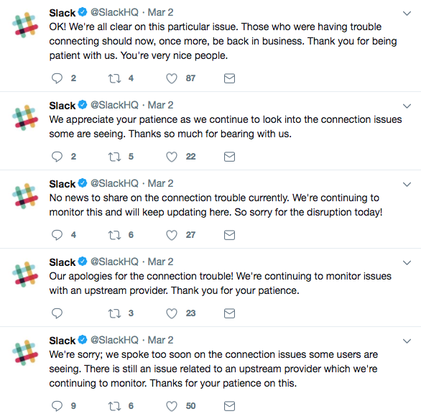
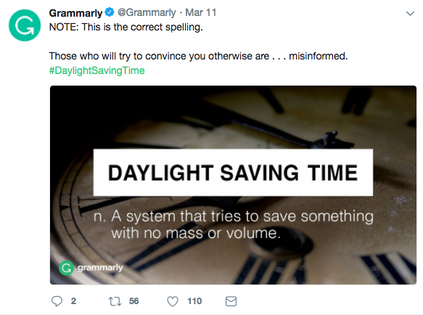
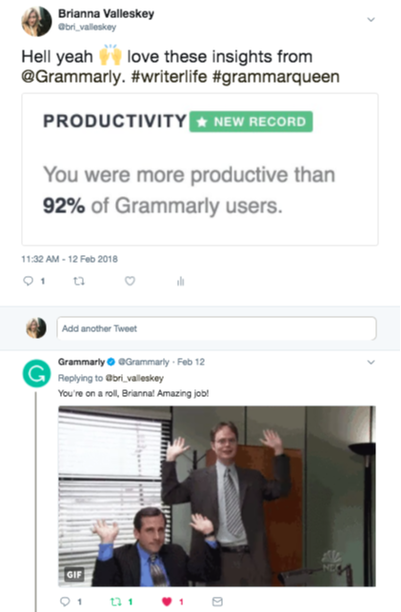

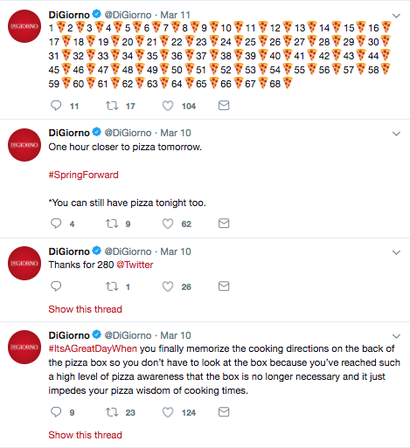
 RSS Feed
RSS Feed
